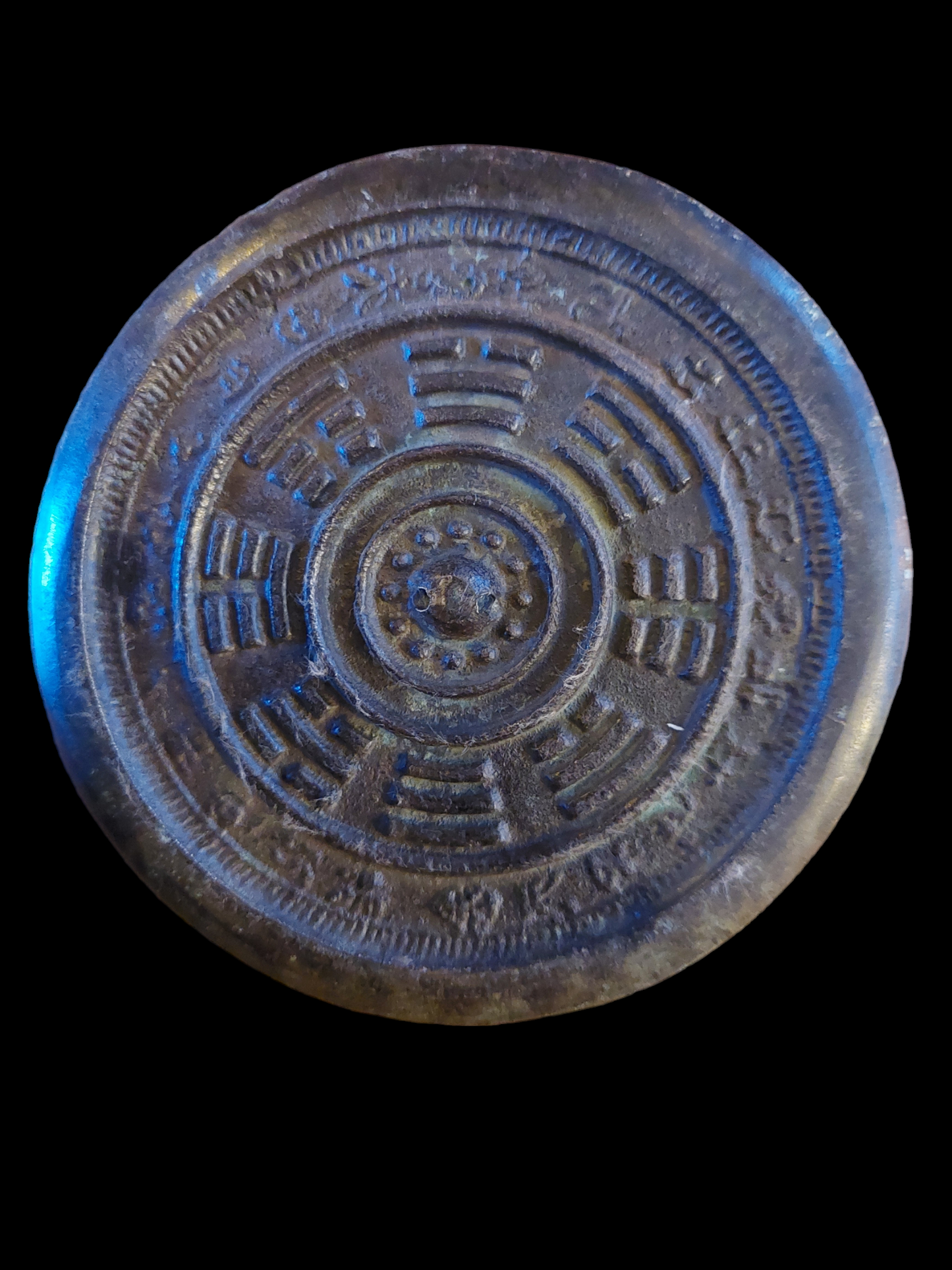Seawolf Shop
Old Chinese mirror Bagua 115 millimeter
Old Chinese mirror Bagua 115 millimeter
Couldn't load pickup availability
Share
Old Chinese mirrors, made somewhere in the 1st half of the 20th century. Made from bronze, which has beautifully aged with a dark green-grey patina over the years. So please take note; while we usually recommend to polish your mirrors regularly to keep them shiny, of course for these ones we certainly wouldn't recommend such a thing.
These mirrors have a diameter of 11,5 centimeters and weigh 247 grams. There are two available. When you order one, we will handpick one at random for you
These Chinese mirrors have a very ancient design. The style, with the central knob on the decorated backside and the Chinese symbolism (in this case four symbols for happiness and well-being) is amongst the oldest known Chinese shamanic mirrors, dating back almost 4000 years. Mirrors like this are often made with the 'lost wax' bronze casting method. This style of mirror is still highly regarded nowadays.
The backside of these mirrors show a motive that became widespread during the Chinese Song Dynasty (960-1279): a Bagua. This motive is nowadays still one of the most popular in China, protecting against evil and bringing harmony to life.
In the center the 8 trigrams ('Ba Gua') of Par Ha Ge can be seen. The trigram symbols come from very ancient origin; they derive from symbols found on ancient Chinese divination bones dating back as long as 11th century BCE. A related version of bone oracle is still used today by Turkic and Mongolian people, and also in the lineage of Spirit of Wolf Shamanism; 'Khaziki'.
Doubled trigrams form 64 hexagrams, which form the core of the I Ching, the Book of Changes.
Each trigram is a divinatory grapheme and represents different dynamics, energies, cardinal points, animals, seasons etc. In depictions such as on these mirrors, where the 8 of them together form a circle, it symbolizes heavenly order, a healthy balance and right flow of energy.
Read more about the origin, design and usage of (shamanic) mirrors in the general description of our webshop collection "Mirrors and Melongs".











